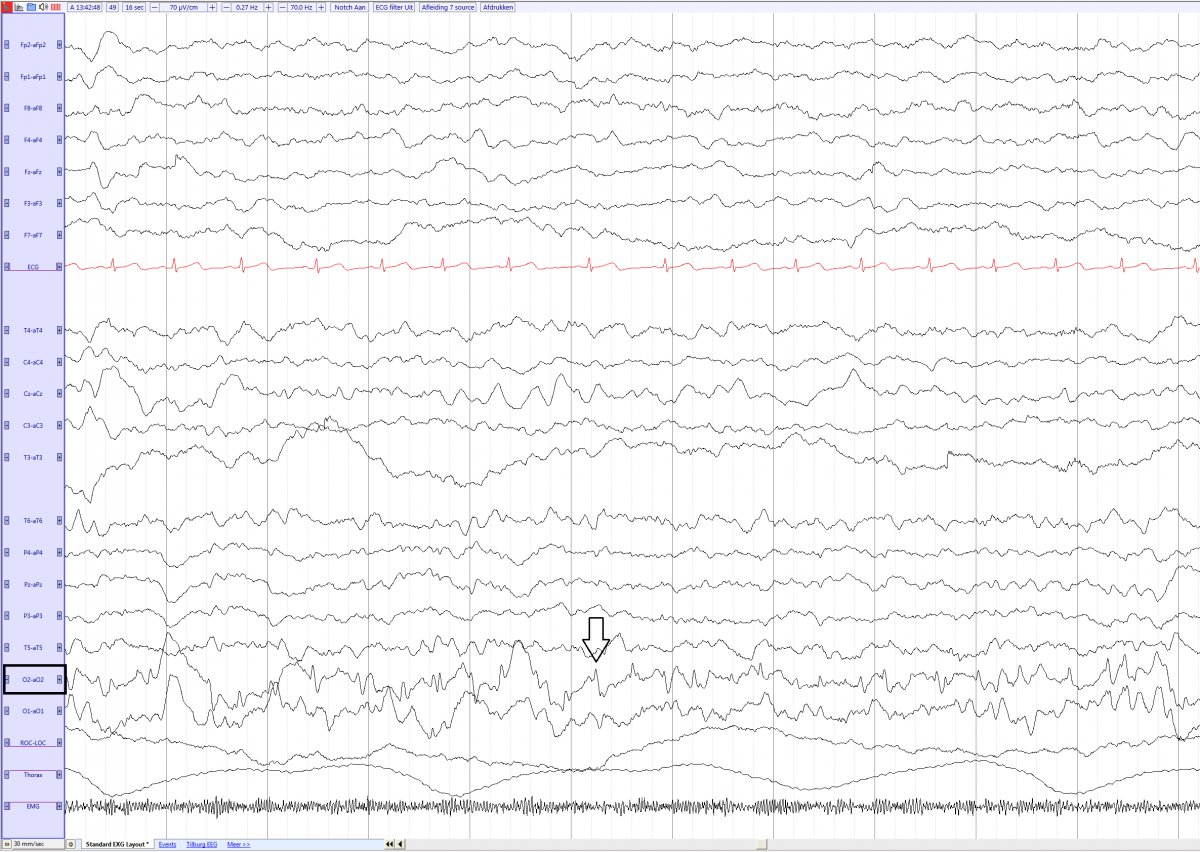Difference between revisions of "Panayiotopoulos Syndrome"
From EEGpedia
(Created page with "'''Background''' * Also known as early onset occipital epilepsy * Common childhood epilepsy syndrome with partial seizures (1 in 8000 children) * Most common in 2-10 years old...") |
(No difference)
|
Revision as of 14:58, 5 July 2017
Background
- Also known as early onset occipital epilepsy
- Common childhood epilepsy syndrome with partial seizures (1 in 8000 children)
- Most common in 2-10 years old, with a maximum around 5 years old
Clinic
- Autonomic dysfunction
- Pale
- Complain of feeling sick and may vomit
- Sweating
- Drooling
- Pupil dilatation or miosis
- Tachy- or bradycardia
- Eye deviation
- Sometimes tonic-clonic movements
- Headache after the seizure
- More than half of the seizures will occur in sleep, particularly in the first hour after falling asleep.
EEG
- Spikes in one or both occipital lobes.
- Sometimes centro-temporal spikes.
- Fixation off sensitivity may be seen: The Spikes are seen when the child’s eyes are closed or if they are not fixating on an object. With eyes opened or fixated, the spikes disappear
- If the EEG done during awake is normal, an EEG during sleep is recommended
Panayiotopoulos Syndrome in a 5 year old girl (source)
